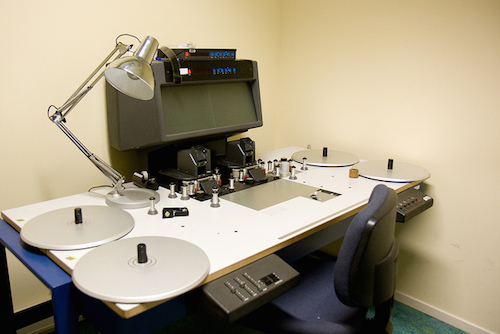 Evolution
Evolution
 Intelligent Design
Intelligent Design
Alternative Splicing: The Film Editor of the Genome

A story in the Harvard Gazette shows again that there are multiple levels of information in the genome beyond genes themselves. Experiments by John Calarco and Adam Norris are featured in the article.
"There are a finite number of genes in the genome, and changing which of those gets turned on or off gives you a certain level of complexity," Calarco said. "What alternative splicing does is add another layer of complexity, allowing an organism to diversify a cell type even more — we think this contributes a great deal to an organism’s ability to diversify its cellular function and cellular architecture." (Emphasis added.)
This could be part of the answer to the puzzle of why so few protein-coding genes were found in the human genome:
"We know the human nervous system is very complex," said Norris. "I think this is one explanation for how that complexity is encoded. We’ve got on the order of billions of neurons, but we’ve only got on the order of thousands of genes. How can you create a complex, billion-neuron network with different capacities for each cell? This gives us one explanation for how an organism can do that."
The story compares alternative splicing (performed by a sophisticated molecular machine, the spliceosome) to what a movie editor does:
Film editors play a critical role by helping shape raw footage into a narrative. Part of the challenge is that their work can have a profound impact on the finished product — with just a few cuts in the wrong places, comedy can become tragedy, or vice versa.
A similar process, "alternative splicing," is at work inside the bodies of billions of creatures — including humans. Just as a film editor can change the story with a few cuts, alternative splicing allows cells to stitch genetic information into different formations, enabling a single gene to produce up to thousands of different proteins.
By studying neurons in the lab roundworm C. elegans, the Harvard scientists proved that the same gene is spliced differently in different neurons. Different genes also create different splicing patterns. This leads them to believe alternative splicing is widespread:
"What this suggests is that this process is happening pretty frequently, and is very complex, even in an animal — like C. elegans — that has just 302 neurons," Calarco said. "That’s why we believe it has a potentially large impact on understanding our own nervous system, which is immensely more complex."
The story gives only a passing nod to Darwinian evolution:
Ultimately, alternative splicing appears to play a critical role in allowing organisms to evolve greater complexity without the need for ever-larger genomes.
But "allowing" an organism to evolve does not mean it will. We will allow you to learn fifty languages; will they evolve in your brain without intelligent design or planning?
Besides, alternative splicing undercuts the whole genetic foundation of neo-Darwinism, which relies on single genetic mutations. Now, we see "another layer of complexity" above the genes. We see the need for a "film editor" of sorts to arrange the spliced parts in the right ways.
The case for intelligent design just advanced to another level. Informed by ID, scientists could take the lead in this cutting-edge research by identifying the design behind alternative splicing.
